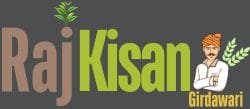Sheep Farming in Australia:- is a crucial sector in the country’s agriculture industry, contributing significantly to both the domestic and international markets. Australia is one of the world’s largest producers and exporters of lamb and mutton, with demand steadily increasing from key markets like the Middle East, the United States, and parts of Asia.

Table of Contents
Sheep Farming in Australia 2025
Australia’s sheep industry has witnessed a surge in production and exports in recent years. In the first half of 2024 alone, Australia exported 155,000 tonnes of lamb, a record-breaking increase of 32.6% from the previous year.
The primary drivers of this growth include strong demand from the Middle East and the US, with the United Arab Emirates and Iran emerging as leading importers.
The US remains the largest importer of Australian lamb, with exports rising 53% year-on-year. However, the Chinese market has experienced a slight decline due to economic challenges, impacting consumer spending on premium meats like lamb.
Sheep Prices and Industry Dynamics
- Despite an increase in supply, lamb prices have continued to rise, driven by sustained global demand. Prices are expected to remain strong throughout winter and early spring, although fluctuations may occur as new-season lambs enter the market.
- In contrast, mutton prices have struggled, as weak Chinese demand and high supply levels have kept prices lower.
Technological Advancements in Sheep Farming
- Modern sheep farming in Australia is being transformed by technology-driven solutions, including precision agriculture, AI-driven insights, and blockchain-based traceability systems. These innovations help farmers optimize flock management, monitor grazing conditions, and ensure transparency in the supply chain.
- Additionally, genetic improvements have played a crucial role in boosting productivity, enhancing traits like meat quality, wool production, and disease resistance. Sustainability practices, such as precision grazing and water efficiency, are also gaining traction in the industry.
Consumer Preferences and Sustainable Farming
- Global consumers are increasingly demanding ethically produced and sustainably raised lamb.
- This has led to a rise in farm-to-fork traceability, allowing customers to track the origin and quality of their meat.
- Additionally, premium cuts and specialty lamb products have gained popularity in non-traditional markets, creating new opportunities for Australian sheep farmers.
Future Outlook
- Looking ahead, the Australian sheep industry is poised for further growth, supported by technological advancements, genetic research, and expanding export opportunities.
- While challenges like fluctuating demand in China and potential climatic factors remain, the overall outlook for sheep farming in Australia is bright.
- Farmers who adopt innovative technologies and sustainable practices are likely to capitalize on the growing global demand for high-quality Australian lamb and mutton.
Conclusion
Sheep farming in Australia continues to be a vibrant and evolving industry, driven by rising exports, price stability, and technological innovations. With continued investments in research, sustainability, and market adaptation, Australian sheep producers are well-positioned for long-term success.



